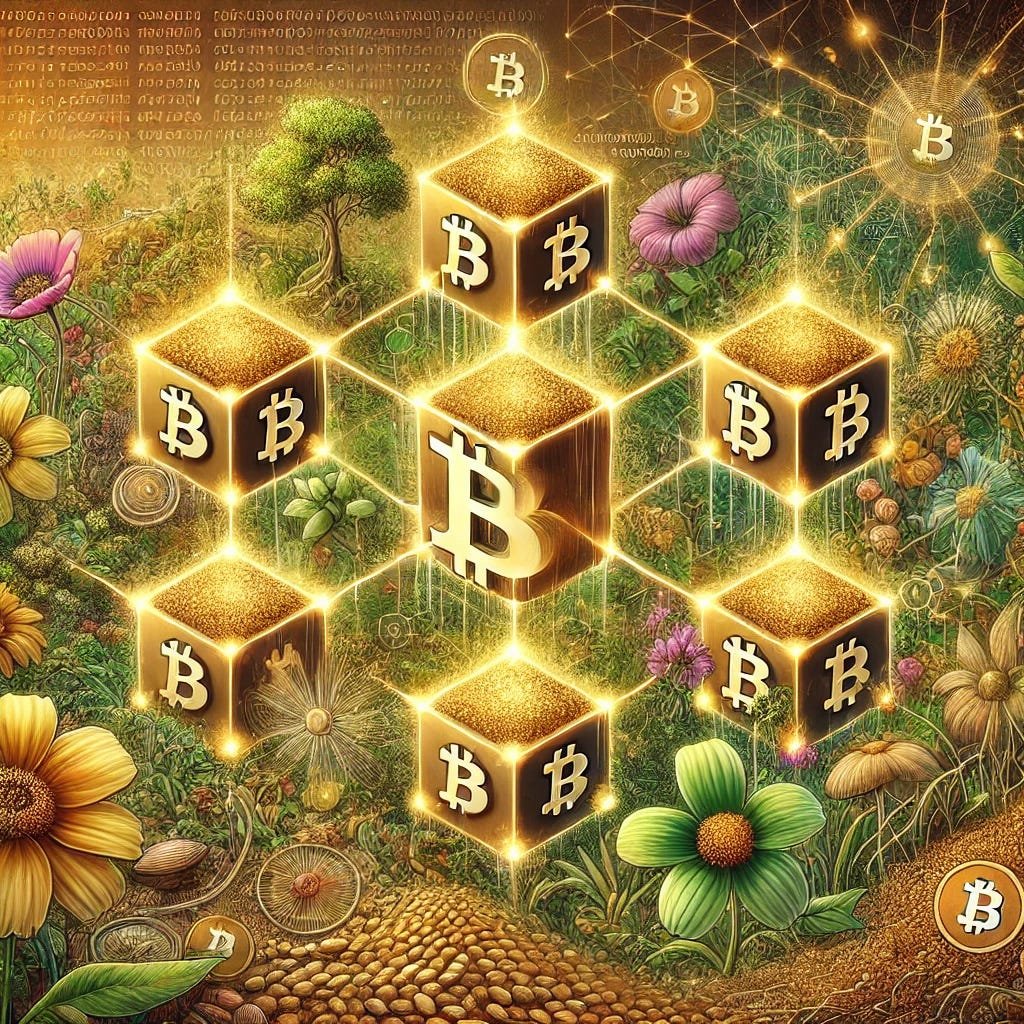Bitseed - The Beginning Dialogue
What Is A Seedchain?
The Timechain Conversation
Setting: It’s New Years Eve and in a cozy, off-grid permaculture retreat in the Pacific Northwest. Alexandra and Miguel are seated at a rustic wooden table, surrounded by stacks of ammo cases used for seed storage, seed catalogues, diagrams, and a glowing tablet displaying Bitcoin node statistics. Outside, the sound of a stream and the calls of birds underscore the tranquil environment.
Alexandra: Miguel, before we go all in on Bitcoin as the backbone of the Bitseed project, I need to understand—really understand—why this technology matters. Why not just use a traditional database or some existing blockchain platform?
Miguel: That’s a fair question, Alexandra. To answer it, we need to go back to the very core of Bitcoin—what Satoshi Nakamoto called the "Timechain."
Alexandra: Timechain? I’ve always heard it referred to as blockchain.
Miguel: Exactly. Most people do, but in the early documentation and code, Satoshi referred to it as a Timechain. The term highlights the real genius of Bitcoin: it’s not just a ledger of transactions; it’s a decentralized, immutable sequence of events anchored in time. Think of it as a global clock that no single entity can control.
Alexandra: A clock? How does Bitcoin tell time?
Miguel: Every block in the chain is a timestamped record. Miners compete to solve cryptographic puzzles that validate these blocks. The process takes about 10 minutes per block on average. This cadence—this passage of time—is fundamental to Bitcoin’s trustless design. It’s what ties the digital realm to the physical world of energy and effort.
Alexandra: That’s fascinating. It’s like a heartbeat for the network. But how does that tie into our project? Seeds and time seem… different?
Miguel: They’re not as different as they seem. Time is critical for seeds too, isn’t it? Germination periods, planting schedules, seasonal cycles—everything in permaculture revolves around time. With Bitcoin’s Timechain, we have a way to timestamp and anchor the provenance of every seed variety in our collection, ensuring no one can tamper with that history. Currently we are using Perma-Ledger to do this, however it is using a standard database, so records can be altered or even deleted, so this is not ideal.
Alexandra: That’s true. Our seed collection isn’t just about the seeds themselves; it’s about their stories. Some of these varieties, like our landraces, carry generations of adaptation and resilience. Yes, I see now why a typical database is not ideal. How would Bitcoin help preserve those stories?
Miguel: We can use Bitcoin to create immutable records of each seed variety: its origin, the conditions it thrives in, and its genetic evolution. These records would be anchored in the Timechain, making them as resilient as the seeds themselves. No centralized authority could erase or alter that history.
Alexandra: That’s powerful, I also heard that Ethereum is easier to create applications on, have you thought of this? But you’re tying Bitcoin to something much bigger than technology, aren’t you? You’re thinking about time itself.
Miguel: Exactly and Ethereum could have been a good choice, however they stopped using proof of work (POW) and moved to proof of stake (POS) and in doing so they removed the unique time-stamping that POW and Bitcoin enables. There is some good information on this aspect here. Humans have always sought ways to measure and organize time. The Gregorian calendar we use today is just the latest iteration in a long history. The ancient Sumerians used the phases of the moon. The Egyptians tracked the flooding of the Nile with a solar calendar. Even the Romans, with their god Janus, tied time to beginnings and transitions. The Roman god Janus is associated with beginnings and transitions, and his name is the origin of the month January. Janus was considered the god of gates, doorways, and the passage of time, and his dual-faced image symbolized the ability to see into the past and the future simultaneously. The month of January was named after Janus to mark the start of the new year, reflecting his role in overseeing all beginnings.
Alexandra: Oh that’s interesting about January, thanks. So, Bitcoin’s Timechain is a modern evolution of that—a new way of marking time?
Miguel: Yes. But more than that, it’s a neutral way. Unlike fiat money, which governments manipulate through inflation and policy, Bitcoin’s issuance schedule is fixed and predictable. Every 10 minutes, a new block is added. Every four years, the block reward halves. This rhythm is immutable, like the changing of the seasons.
Alexandra: The halvening—I’ve heard of that. Isn’t it when the reward for mining new blocks is cut in half?
Miguel: Exactly. The halvening is a pivotal event in Bitcoin’s design. By halving the block reward every four years, Satoshi ensured that Bitcoin’s supply remains finite, capped at 21 million. This scarcity mimics natural resources, like gold, and creates a deflationary pressure over time. It’s another way Bitcoin ties itself to the passage of time, reinforcing its value and trustworthiness.
Alexandra: It’s almost poetic. But why is that immutability so important for our seeds?
Miguel: Imagine this: A rare landrace seed from our collection becomes critically important in 20 years because of climate change. If we’ve anchored its history and provenance in the Timechain, no one can dispute where it came from or how it was cultivated. That transparency and trust are invaluable.
Alexandra: I see your point. It’s not just about preserving seeds but also their legacy. The Timechain could become a tool for bioregional resilience.
Miguel: Exactly. And Bitcoin’s decentralized nature ensures that no single entity can monopolize or corrupt this system. It’s the same ethos as permaculture: decentralized, resilient, and interdependent.
Alexandra: You’ve convinced me. Let’s use Bitcoin as the backbone of Bitseed. But one more thing…
Miguel: What’s that?
Alexandra: Can we call our implementation the "Seedchain"? It feels fitting, given our mission.
Miguel: Seedchain it is. Let’s anchor our seeds and their stories in time—for the future. It has a good ring to it “Bitseed running on The Seedchain”.
The episode closes with Alexandra and Miguel sketching out the Seedchain architecture on a whiteboard, their vision taking root in the fertile soil of decentralized technology and timeless principles.





